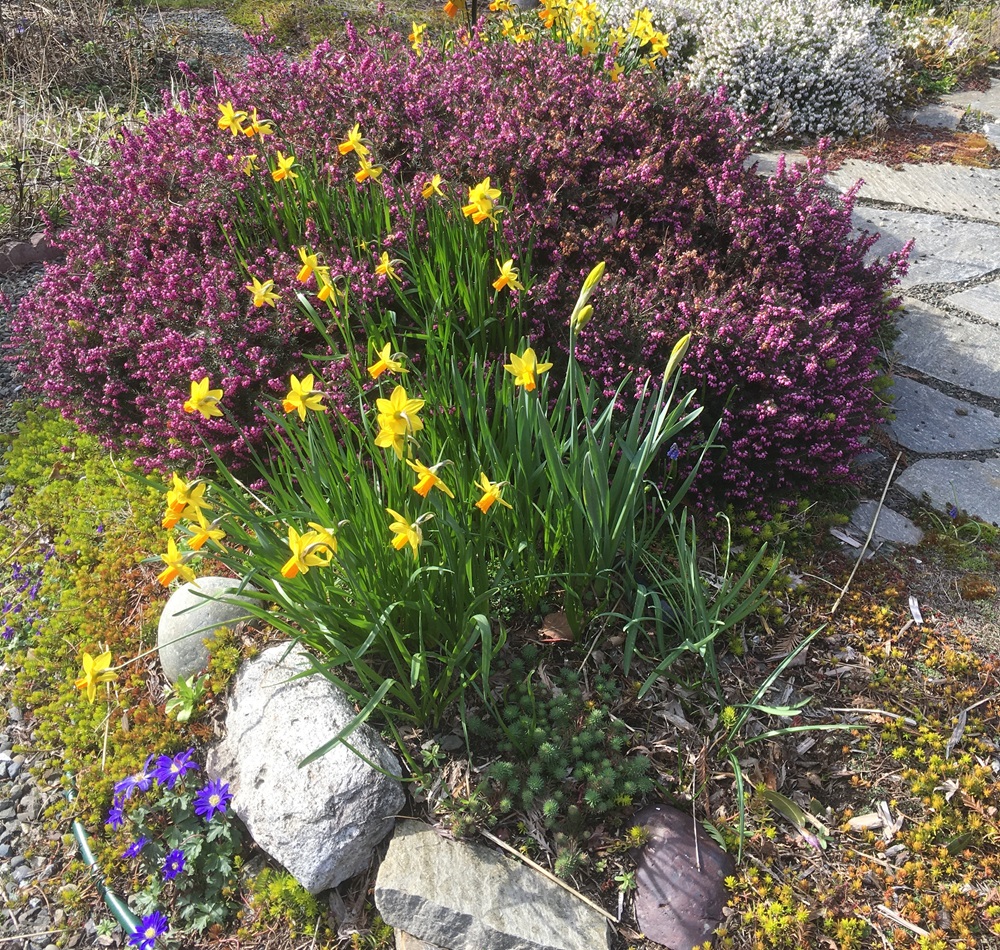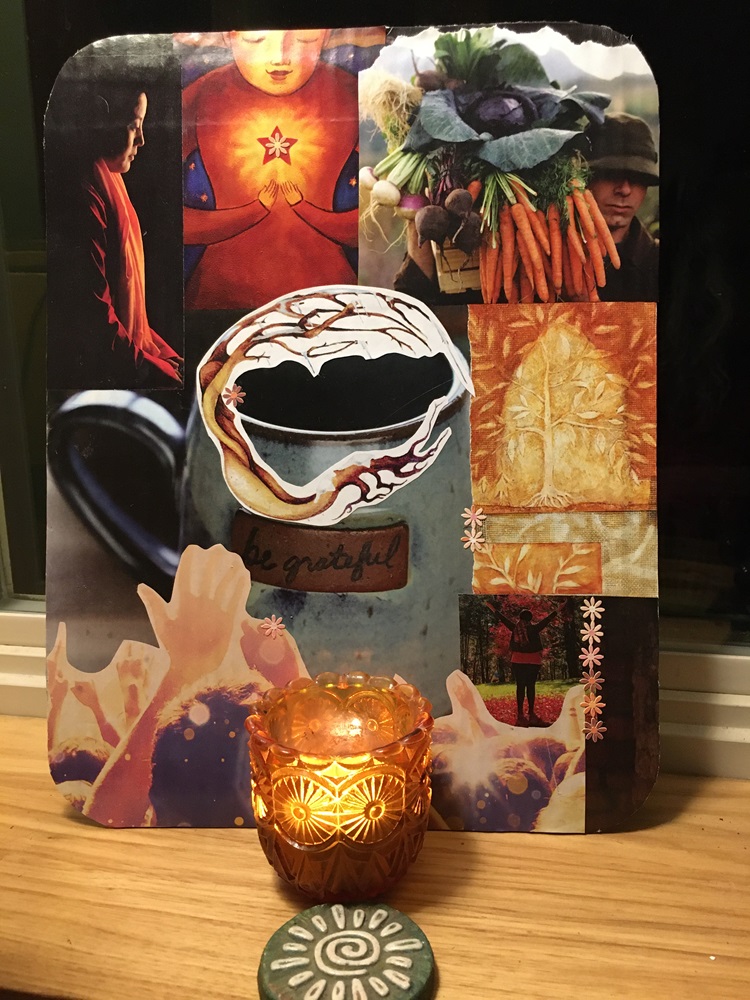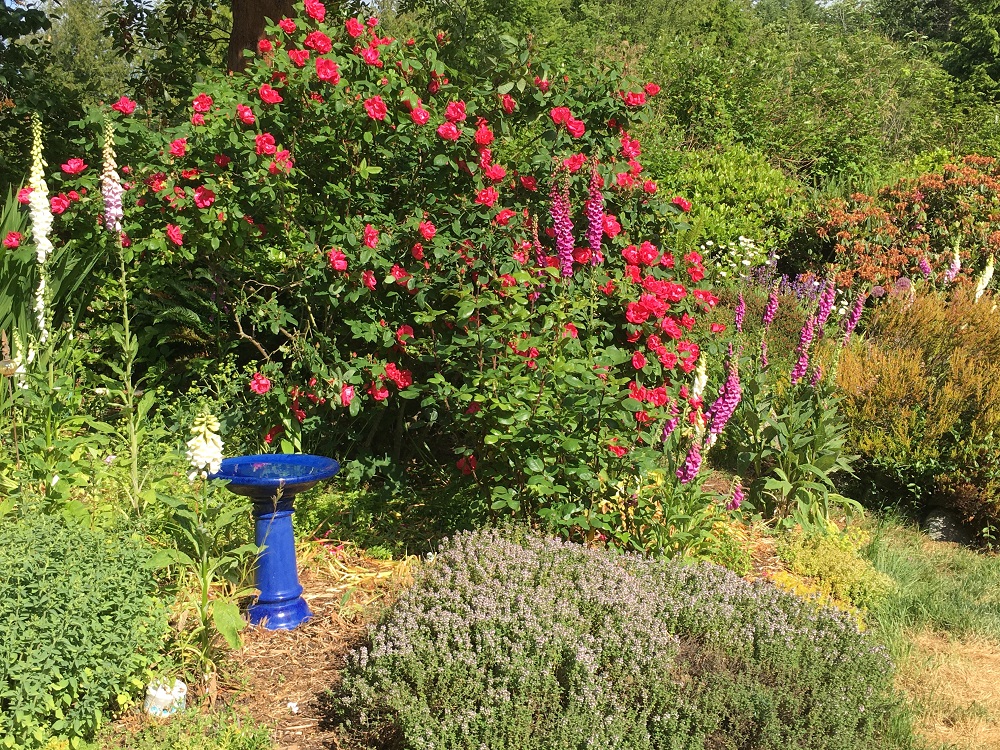This blogpost was originally a sermon for a service I put together
for Quimper Unitarian Universalist Fellowship on August 16, 2020.
You can watch the whole service and find the readings that accompany it.
When Heidi (the musician I was working with) and I were rehearsing for this service, she asked me what the focus would be for my sermon. And as I answered, I realized that really, all of my work—paid, unpaid, personal or business, has been about this—about walking in beauty. No wonder I wanted to try to put it into words!
The titles I hold—Interfaith Minister, Sacred Musician, Spiritual & Life Coach, Yoga Teacher, and more—they are all different ways that I help myself and others walk in beauty.
For when we walk in beauty, our lives are more whole.
We love our lives.
We are kind to others and to ourselves.
We live a good life that is good for all beings, including Eairth.*
John O’Donohue says Beauty points beyond itself to the circle of belonging that holds everything together. When we experience it, we feel at home in ourselves and in the world.
This reminds me of a story I read in Trebbe Johnson’s book Radical Joy for Hard Times. David Powless, a scientist and member of the Oneida nation, was given a grant by the National Science Foundation to develop a process for recycling steel waste. His initial impulse was to go out and conquer the problem—to force the waste into a new form, but when he arrived at the waste pile to get a few bucketfuls, he felt something else.
From his years of ceremony, in which all beings are honored as part of the sacred circle of life, David had an epiphany that this waste was not something that needed to be forced into a new and better shape. It was an orphan that needed to be brought back into the circle of life. It wasn’t just an ugly manifestation of industrialism wreaking havoc on Eairth, but a rejected part of life that needed support to be brought back into the Circle.
The circle of life holds everything together.
This is a way of living and knowing our belonging that many indigenous peoples before us practiced and still practice today.
We are invited into this deeper experience of participation with all beings if we are to walk in beauty. When we are part of the circle, no-one, no creature, no part of the natural world, no part of ourselves, no earth processes, nothing is left out. We realize that we all have our place and each one is needed. When the circle is broken, we must do what it takes to re-home the orphans and make the circle whole again.
How do we do this?
The Diné or Navajo Nation walked the Beauty Way Path. Patricia Anne Davis of the Navajo Nation Justice Department says walking in beauty means to consciously live in and with the natural order of life—finding meaning and sustenance in contact:
- with the Directions: East, South, West, North
- with the Elements of Eairth: air, fire, water, earth
- with the seasonal energies: Spring, Summer, Fall, and Winter
- with our maturing: through the life stages from child to youth to parent to grandparent.
All held by the Center representing the hearth of home, the spiritual family love.
Finding beauty, seeing beauty, making beauty, walking in beauty not only maintains the circle of life, but makes sure we keep our place in it.
From our Western tradition, the poet Keats said it this way: “Beauty is Truth and Truth is Beauty—that is all ye know on earth and all ye need to know.”
When we walk the Beauty Way Path, we have a much greater chance of knowing this on Eairth; when we do not, we might miss it.
Let’s consider Keats’ words for a moment: Beauty is Truth and Truth is Beauty.
How amazing is that? I immediately go cosmic and think of the beauty and truth of the Universe—of the incredible, unfolding powers that created our solar system and planet Eairth and make life possible, even now as things are collapsing.
I think of the Beauty of words and thoughts from the Truth of one’s experience, spoken and written. Of the Beauty and Truth expressed in music, in art. Of the Beauty and Truth in each action and moment if we only have eyes to see it…
And, indeed, Beauty comes down to how we see life.
Do we see it, as I still sometimes do, through our personality-clouded eyes? Or do we see clearly through the eyes of the heart?
As an Enneagram type One, my habitual, less awake way of seeing is about seeing what’s wrong, not what’s beautiful. I like to fix things, make them better, help return them to Beauty. (Not always in skillful ways, though—my husband doesn’t usually want to know when he has put something in the wrong, unbeautiful place.)
There are many ways we see without seeing Beauty:
- Perhaps with too-busy or distracted eyes that don’t take the time to land and take it in,
- Or maybe with pre-occupied eyes, that look but don’t really see,
- Or perhaps with inner-turned eyes, dwelling on some deep thought or inner sadness, frustration, or fear…
If we had a Beauty Way tradition like the Diné—of ceremony, prayer, and intimate participation with Eairth—we might not find it so difficult to feel Beauty’s loving embrace.
But we don’t. In our evolution into “modern” humans, we thought we had to leave that behind in order to develop an objective science. We wanted to find and know our place in the universe, but we plundered Eairth and her other living beings to do this. Because of this, we “moderns” don’t understand how to live in the natural order of Eairth’s ways anymore.
We have learned to think that Beauty is not here with us, but out there somehere:
- Created and performed by artists
- Hung in museums, found in magnificent structures, idealized in models, celebrities, and beautiful people
- Or in a perfect view of nature
- The Salish Sea with Mount Baker rising behind
- The stunning layered landscape from the top of a mountain
- The giant cedars, doug fir and hemlock of old growth forests.
While that kind of Beauty is real and nourishes us, I’m interested in cultivating ways we modern humans can participate in Beauty every day.
One of my favorite practices that have shared with clients over the years is called “Beauty sees Beauty.” When I first started practicing it, I would take a slow walk and everything I saw, I would say “Beauty sees Beauty.” Over time, I incorporated this practice into my life, including other senses as well: Beauty sees Beauty, Beauty touches Beauty, Beauty tastes/hears/smells Beauty…
Try it on right now with me.
Just look around wherever you are and let your eyes alight on something—even something that you would not necessarily call “beautiful” and slowly say out loud or internally “Beauty sees Beauty.” “Beauty sees Beauty.”
What happens inside of you?
For me, my heart leaps, lights up, comes alive, a smile comes on my face, warmth infuses me. I receive the Beauty of what I have seen and I receive my own Beauty, of Beauty seeing Beauty.
As O’Donohue says, “The human soul is hungry for beauty: we seek it everywhere…” Why not land in the present moment and be with Beauty right now?
This practice returns us to the Beauty Way Path. For when we receive Beauty in ourselves and all around us, we want to walk in it. We want to live its natural order, we want to make choices that continue the circle of life, of Truth, of Beauty.
The other wonderful part of this practice is that it reaffirms that not only what we are sensing is beautiful, but that we, too, are part of this Beauty.
Beauty recognizes Beauty.
Our unique and individual Beauty is a necessary and vital part of the circle. “Though sometimes ,” as Galway Kinnell reminds us, “it is necessary to reteach a thing its loveliness…”**
Many of us come to our adulthoods with wounds, with broken places from not being seen or understood, from intentional or unintentional abuse. We need to be retaught that our lives, our thoughts, our feelings, our being is beautiful and part of the circle.
We are that orphan that needs to be welcomed home. My own inner work and my work with clients always involves this.
David Powell saw this in the steel waste pile. St. Francis in the sow.
And Trebbe Johnson invites us to see the beauty in broken or wounded places.
An environmentalist, Trebbe’s work focuses on how we can be in relationship with places on earth that have been devastated by human abuse.
It’s all about allowing the place to touch us, to see with the eyes of the heart and open to the Beauty that is still there. Yes, I may be scrambling through a clear cut, but just look at those foxgloves standing tall and waving on the slope! And here’s what looks like an entry to an animal’s shelter tucked under that stump. And everywhere, new growth shooting up.
Beauty sees Beauty.
Yes, the heart aches with the loss, the grief, the fear, the anger—and suddenly, something amazing happens, a threshold is crossed and Beauty arises—we are able to perceive the Beauty that is already here, everywhere.
This is not something we can make happen, but we can practice. We can show up, open up, soften up, and be available to the moment. One of my teachers calls this making ourselves “accident prone to grace.” For only in this moment, in presence, is Truth and Beauty.
People tend to want black-and-white Beauty—to evaluate the standards of Beauty and judge how beautiful a thing is. To judge like this is to step out of the circle and see ourselves or someone/something else as “other.”
If we soften our gaze, and allow our hearts to open… If we sustain our gaze and wait and practice, even in the most devastated places and people, Beauty sees Beauty.
Beauty is big enough, inclusive enough, vital enough to include everything, even the broken, wounded, abandoned places. In fact, it is often in the wound, in the vulnerability that we find a deeper meaning, a richer experience of Beauty. We move from “view-finder” prettiness to a Beauty that touches and opens our hearts.
John O’Donohue says “to participate in beauty is to come into the presence of the Holy.”
That is what it feels like. As Beauty opens—or our eyes awaken to it—we perceive that everything is sacred, everything is whole, everything is included in that wide embrace.
I created an e-book for my clients called Welcoming the Sacred. It’s packed full of simple practices we can do in our everyday lives to bring us into the moment and welcome the sacred, the True, the Beautiful.
Trebbe Johnson finds this sense of sacredness when she practices what she calls “Guerilla Beauty.” After spending time gazing, seeing the Beauty in wounded places, she gives a spontaneous gift of Beauty, created from whatever materials are available. It may be stones piled into a cairn, sticks, leaves, and flowers in a mandala, root sculptures, a story or a song… But giving this beauty to the wounded place moves her past feeling separate into relationship with the place—as she says, “to give beauty is to marry the world, outside and within.”
For, when we do this, we take our place in the circle of life. We perceive ourselves, our lives, the wounded places as full of Beauty. And if we perceive this Beauty, we will walk in Beauty with each other, living a good life in a wide Circle that includes not only all humans, but Eairth and all her creatures as well.
May you walk in beauty,
May we walk in beauty.
* Eairth = Earth and Air
** from his poem St. Francis and the Sow

















